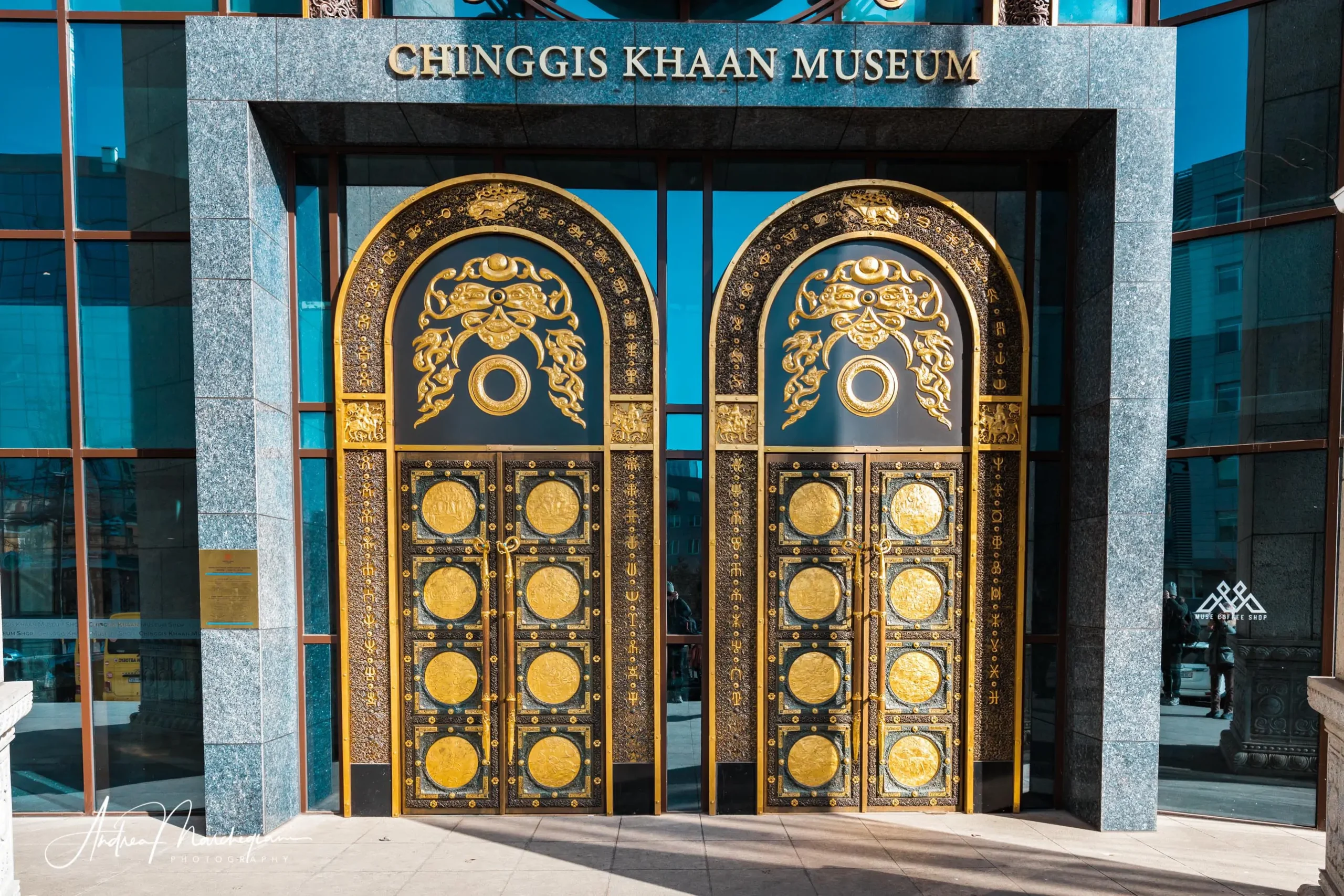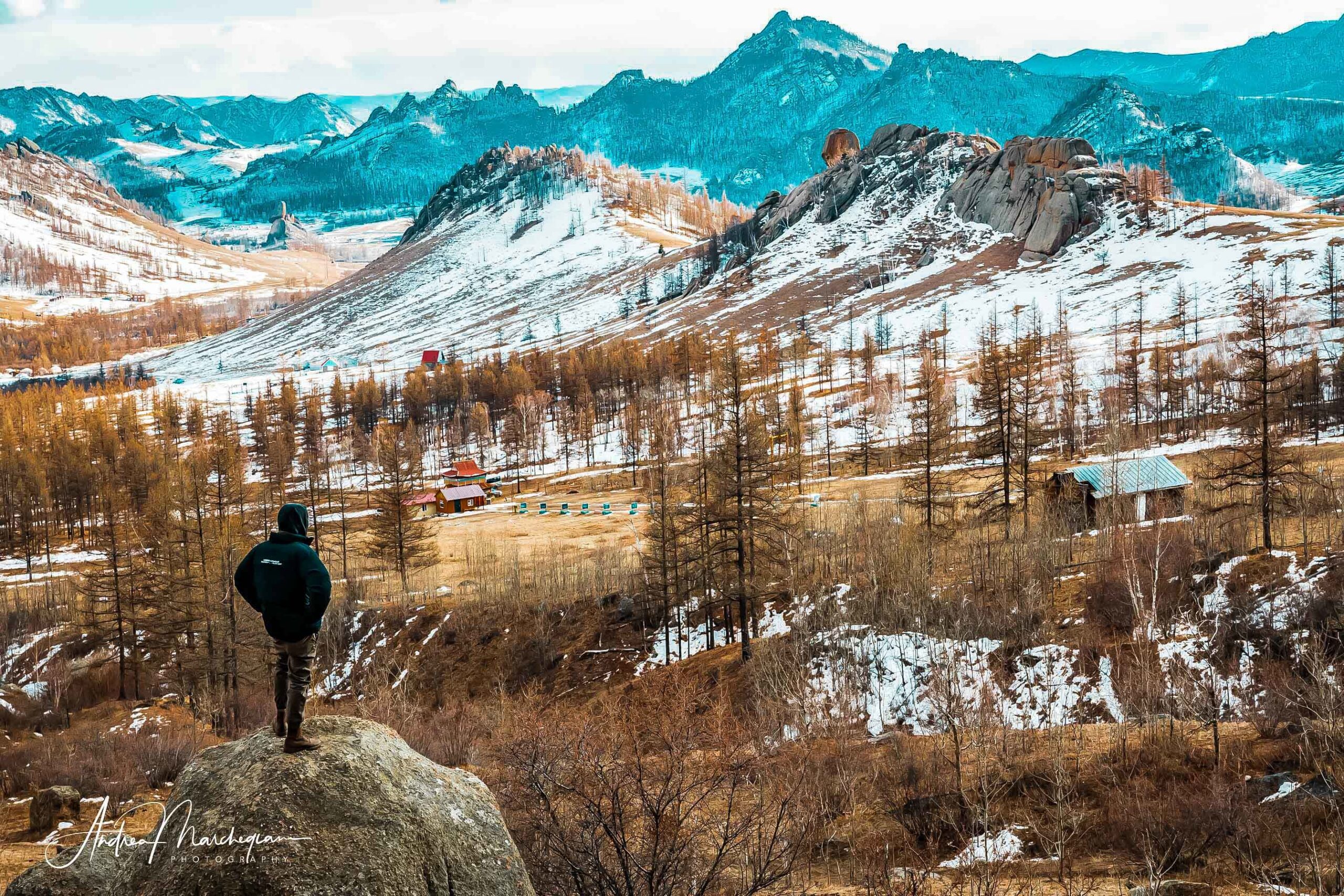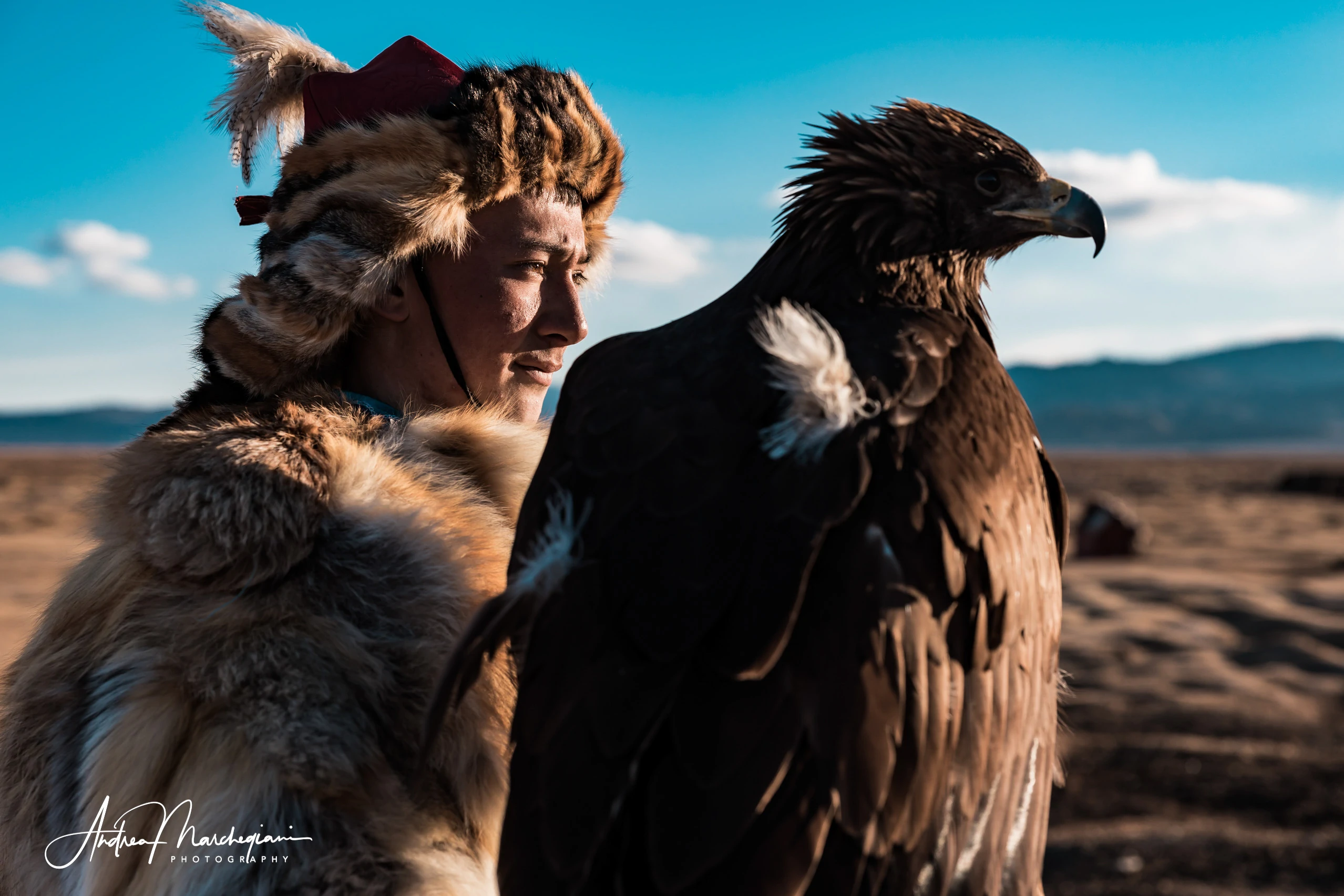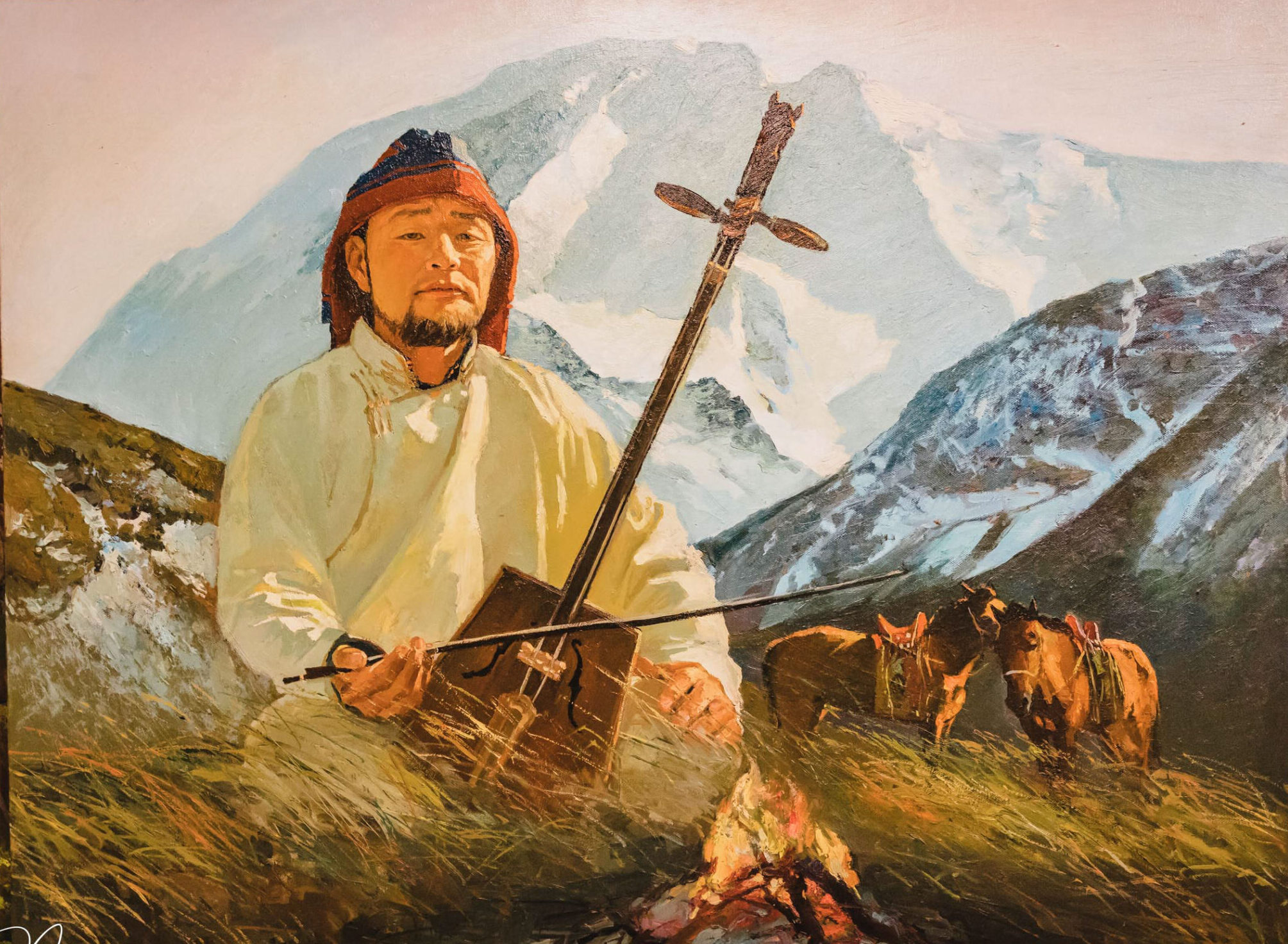
- Home
- Photo Galleries
- Portrait Photography
- Landscape Photography
- Street Photography
- China
- Ethiopia
- India
- Holy Ganges
- Varanasi
- Varanasi Ganga Aarti
- Varanasi, Manikarnika Ghat
- Varanasi Streets & Alleys
- Varanasi Demolition
- Varanasi Fruit Market
- Sarnath
- Brick Kilns
- Tamil Nadu, Chennai & Mamallapuram
- Tamil Nadu, Fort Tirumayam & Madurai
- Tamil Nadu, Tiruvannamalai & Thanjavur
- Kerala, Munnar
- Kerala, Peryiar
- Kerala, Backwaters
- Kerala, Kochi
- Kazakhstan
- Myanmar
- Senegal
- Uzbekistan
- Travel Blog
- China
- Ethiopia
- India
- Tamil Nadu & Kerala
- Varanasi
- Whato to do in Varanasi
- Varanasi Life along the Ghats
- Varanasi Death along the Ghats
- Varanasi Ganga Aarti Ceremony
- Varanasi demolished to honor Shiva
- Varanasi Fruit Market
- “Varanasi, A Journey into the Infinite”
- Sarnath
- All about River Ganges
- Holy Shit. All about Indian Cow Dung
- Clean India Project
- Brick factories
- Tilaka, pundra, bindi: what is the mark on Indian foreheads?
- Kazakhstan
- Mongolia
- Ulaanbaatar, the coldest capital in the world
- What to do in Ulaanbaatar
- Chinggis Khan Museum, 6 floors of Mongolian history
- Gorkhi-Terelj National Park and Bodgkhan Natural Reserve
- Altai Mountains, Things to do in Olgii and Sagsai
- Living with the Eagle Hunters
- Sagsai Eagle Festival
- Navrus Festival
- Xöömej, Mongolian throat singing
- Mongolian Food
- Myanmar
- Senegal
- Uzbekistan
- Latest Posts
- Photography Blog
- About
- Prints
Share with your friends:




Mongolia is a fascinating country, famous for its breathtaking views and the incredible nomadic culture of Genghis Khan’s heirs. However, when it comes to food tourism, Mongolia may not be the first destination that comes to mind.
Its cuisine is influenced by the extremely cold climate and lifestyle of nomadic populations, with meat and dairy products as the predominant components. Vegetables and spices are rarely used in traditional Mongolian dishes, while mutton is always present ( beef meat is less common).
In the capital, Ulaanbaatar, you will find a wide selection of restaurants of different culinary styles from around the world. If you really can’t get acquainted with the strong taste of mutton, you can take refuge in a Burger King or KFK.
However, if your trip involves a stay with the nomadic people of the steppes, be prepared for less varied food than you might expect, with simple recipes that are based on the products of sheep breeding, cows and goats.
In addition to meat, nomadic cuisine is based on dairy products such as milk, yogurt, dry cheese and fermented milk drinks. The dishes are prepared in ger, the typical Mongolian tents, and cooked on coal or gas stoves.



If you have the chance, watch your cooks slice the vegetables, grind the meat and prepare the dishes. It really is a charming experience!
Before you despise a dish you better think twice, since the nomadic culture is based on the values of hospitality and you would displease your guests if you show you do not like what they offer you with such generosity.
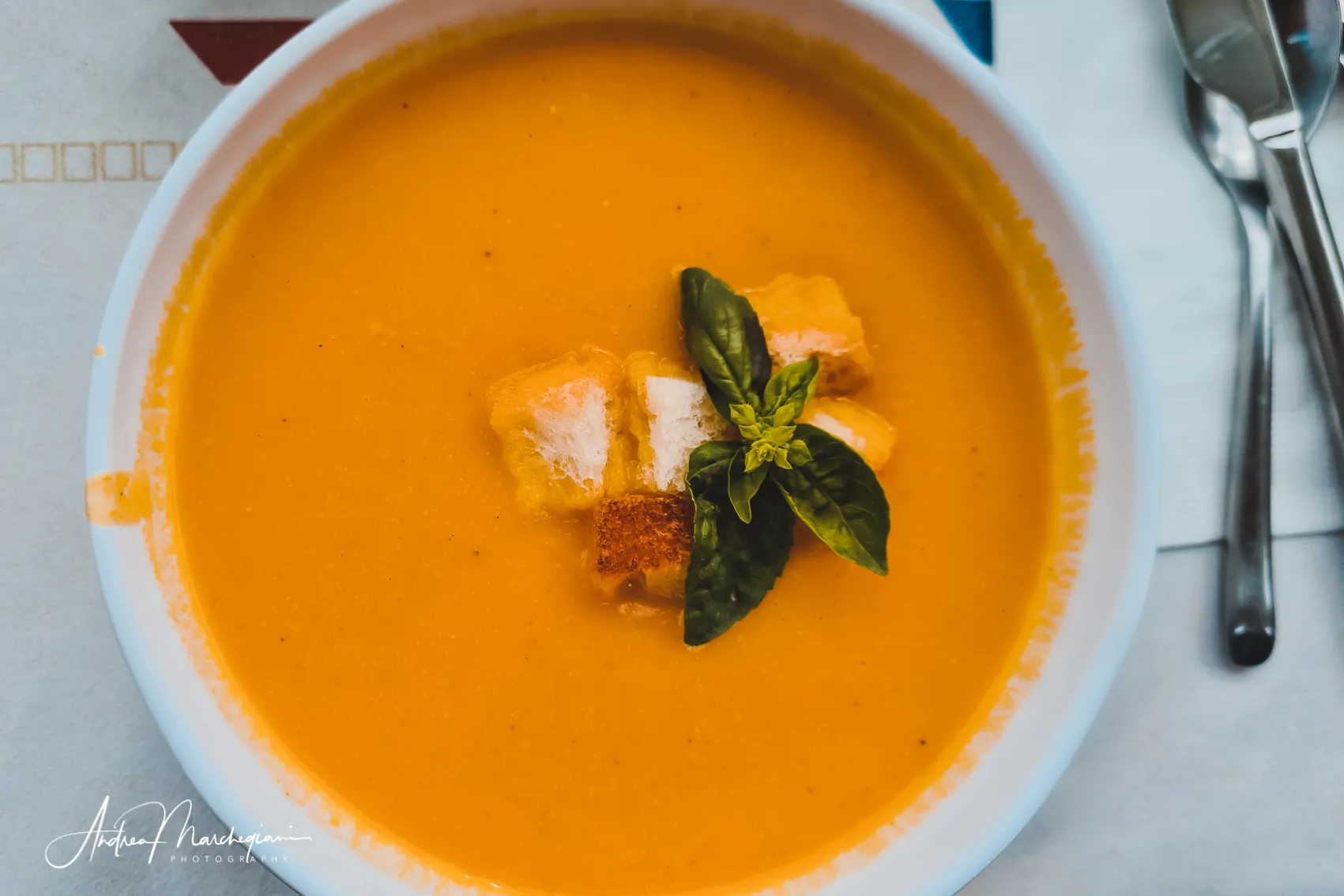
What to eat in Mongolia
1. Aaruul
It looks like a dry biscuit, but it is actually curd milk dried outdoors and then cut into cubes. The Mongols love to offer it to their guests and you will find it on the table at every meal as a snack.
It is one of the most famous “white foods” (that is, milk-based) and is much loved by the Mongols, who soak it in salted tea, even if it might not be appreciated by foreign palates. I only tried it once, then stayed away from it!
2. Buuz
Considered the most famous “gray dish” (meat-based) of Mongolia, buuz look like Chinese dumplings, but they get stuffed with mutton, onion and garlic, so they have a more decisive and characteristic taste. I found them delicious, but those who don’t like wild meat might find them too tasty.
Its smaller version is called Bansh and is usually served in soup on special holidays.
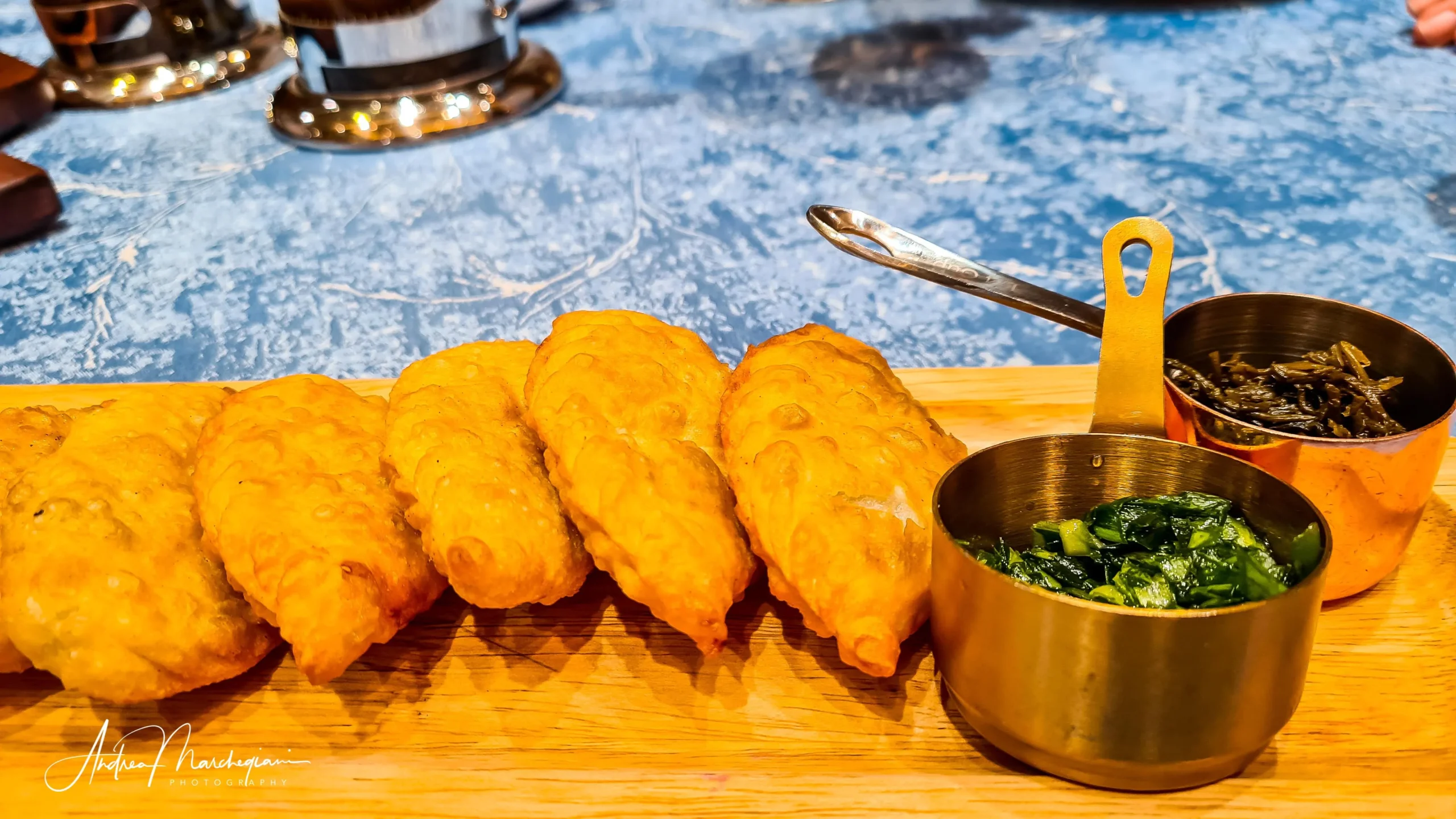
3. Khuushuur
These are fried pastry, always made with mutton, onion and garlic. Compared to buuz, they are larger and crescent-shaped. Frying gives the dough a crispy crust and makes them delicious as only fried things can be.
A Khuushuur lunch consists of 4 pieces per serving for men, 3 for women. They can fill you up for many hours, but it takes a bit of stomach effort to digest them!
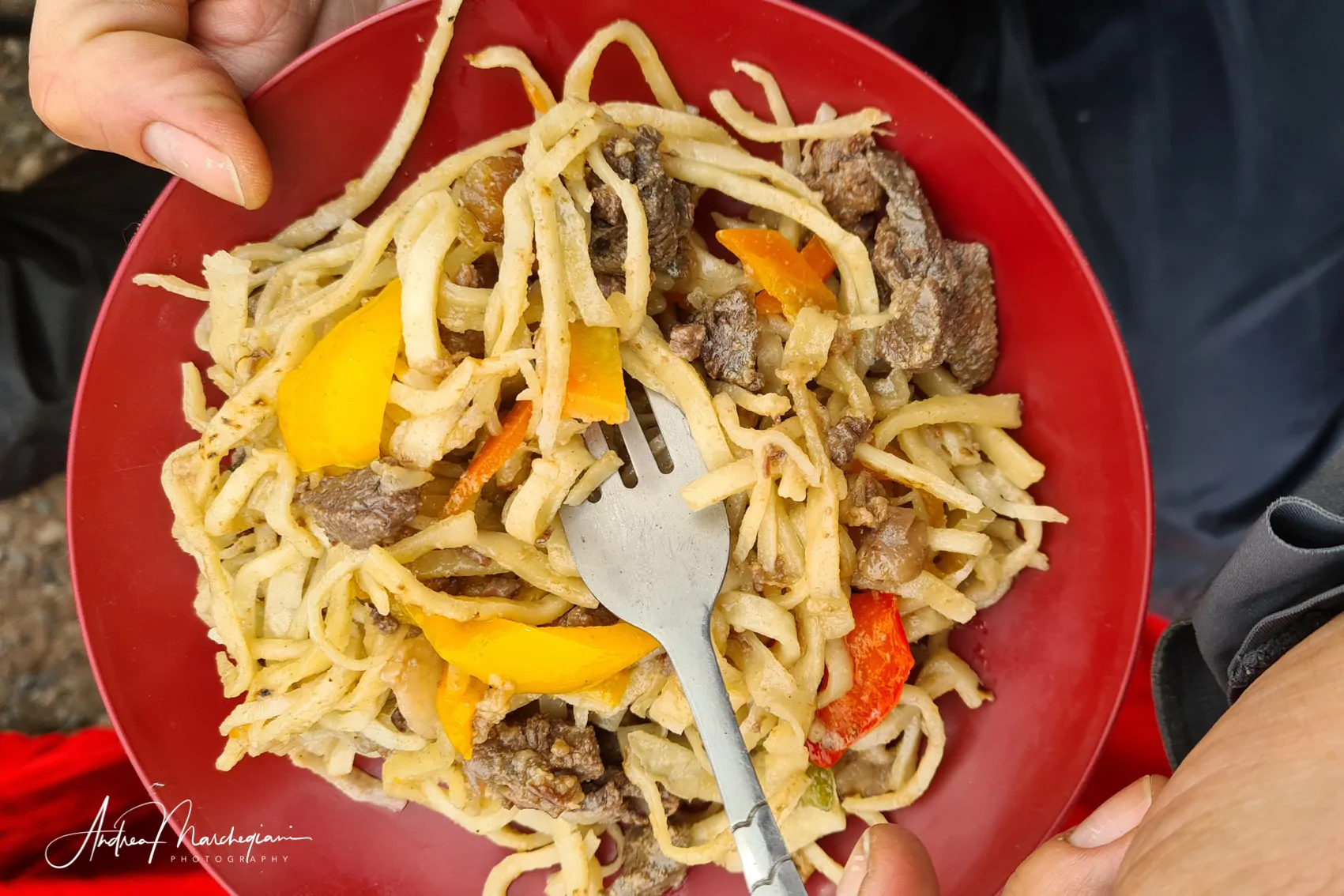
4. Tsuivan
Fried Noodles with vegetables and ground meat. You will eat Tsuivan in large quantities, since the Mongols love it and the tourists appreciate it very much.
My guide Uugie told me in Mongolia there is a popular saying thatgoes like this: “choose your wife according to how she makes love and cooks Tsuivan!”
Compared to Chinese noodles, the dough is thicker and made from wheat (imported from Russia). The mutton is cut into strips and, if you have difficulty eating fat, you may ask them to prepare it preferring the lean part.
5. Guriltai shu
A good soup warms every soul! Guriltai shu is a soup made of noodles, vegetables and mutton, fat included. It has a very strong and satiating taste, try it at least once.
6. Khorkhog
Also known as a Mongolian barbecue, khorkhog is a typical dish that has been consumed since the time of the ancient Mongolian warriors. The mutton is cooked on the fire, together with various types of vegetables, in a pot with river stones previously heated.
7. Boodog
This dish is also prepared with hot stones, but unlike khorkhog, it is made from groundhog or goat meat and the stones are threaded directly inside the flesh of the boned animal. So the meat is cooked from the inside, creating a unique and particular dish.
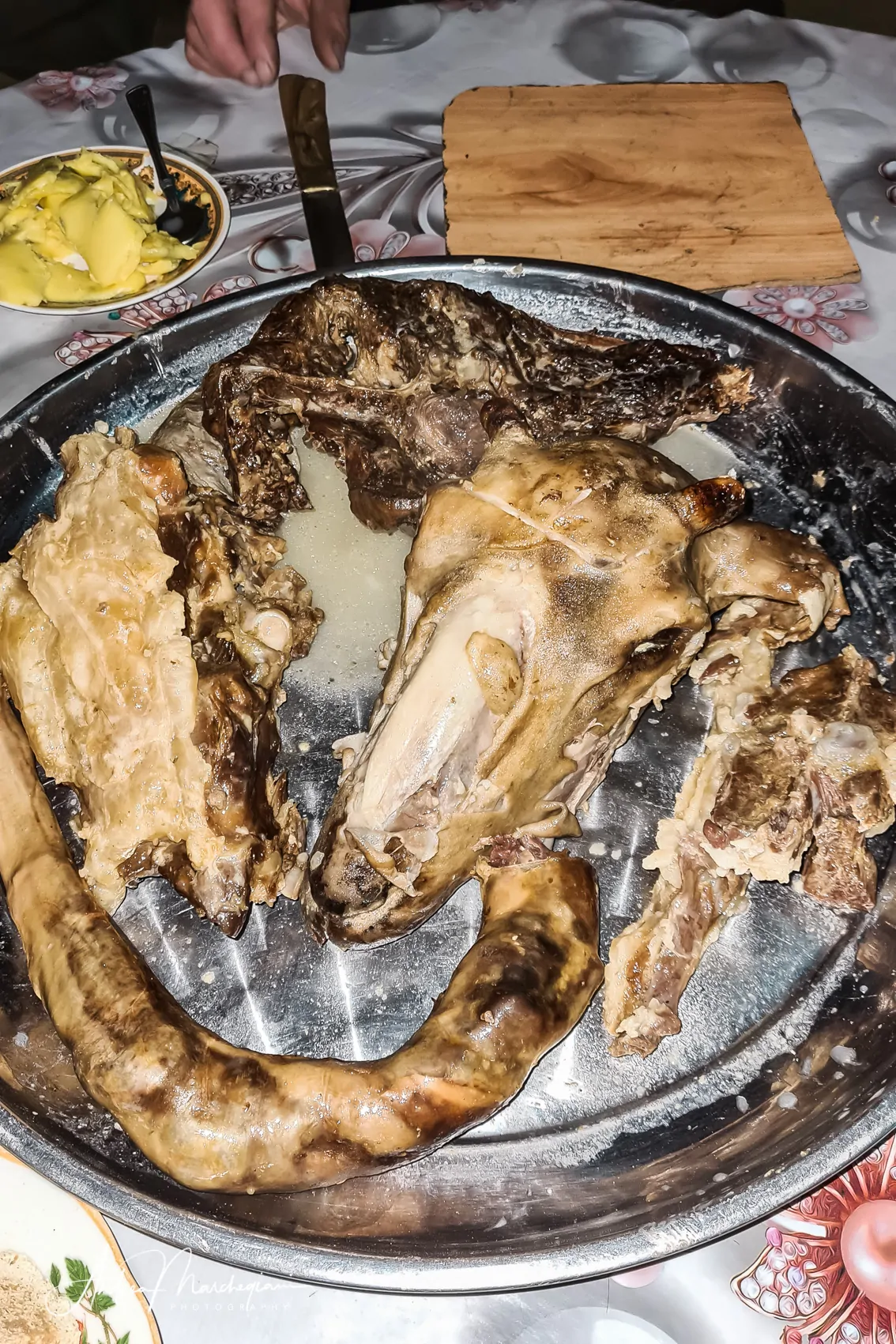
8. Sheep head
Here we come to the greatest Mongolian culinary oddity. The boiled sheep head! The Mongols call it Honinii Tolgoi or simply Beshbarmak (if served along with parts of other animals). Beshbarmak means “5 fingers”, because it is eaten with the hands.
Every part of the head is eaten, none excluded: if they invite you to taste the eyes, know that it is considered the most valuable part and they are reserving you a great honor.
This unusual dish has very ancient cultural roots and has to do with the rigidity of life in the steppes. Wasting food is considered a great sin, so when you kill an animal you try to feed on every part of it, including the head.
I tasted the sheep’s head for the Navrus, the holiday celebrating with the arrival of spring. I was a guest of a family of Kazakh shepherds and I had trouble trying, but I must say the meat tasted very good and does not differ much from any stew you have already eaten. The evening continued with songs and family dances, so I keep a special memory!
What to drink in Mongolia
1. Tea instead of water
You will be surprised not to receive fresh water with your meals. And you will be even more surprised not to feel the need of it. In fact, given the harsh climates of Mongolia, once you sit at the table all you want is to shake the cold off and warm you up by any means possible.
You will be pleased to receive abundant amounts of hot tea in large thermos. Tea is not sweetened, but you can ask for sugar separately.
At the end of my stay in the Altay mountains, where I lived with the Kazakh eagle hunters, I had drunk so much tea that I could not take it anymore. Fortunately my travel companions had packed many types of herbal teas that I enjoyed!
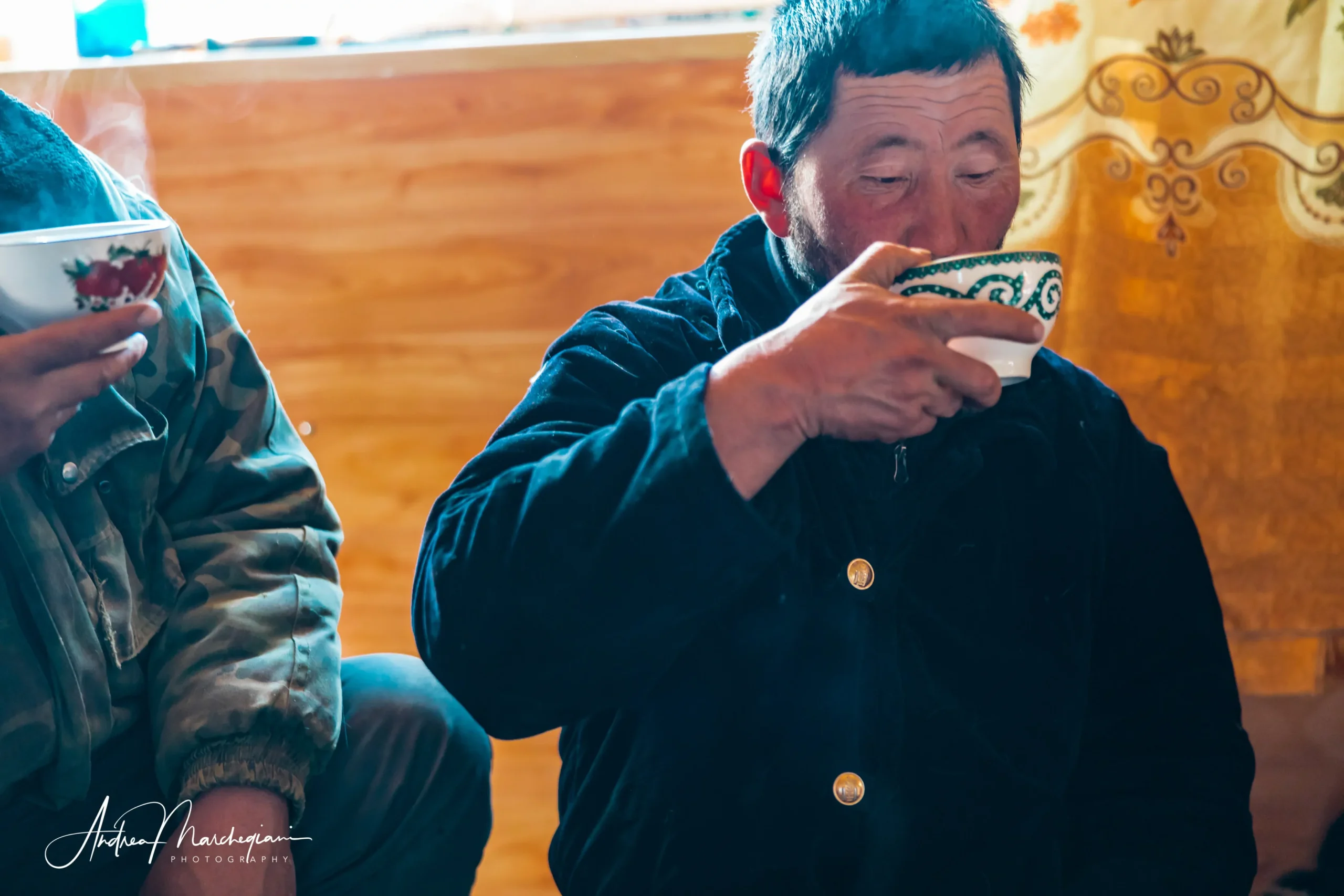
2. Airag
This drink is known as kumis in many Central Asian countries and is obtained by fermentation of mare’s milk.
In Mongolia they call it airag and it is slightly alcoholic, with a sour and refreshing taste similar to kefir. It is often consumed during celebrations and is an important part of Mongolian nomadic culture.
3. Suutei tsai
It is one of the most common drinks in Mongolia and is prepared by boiling tea with water and salt and then adding milk. Refreshing and nourishing, perfect for facing the harsh climate of Mongolia, it will be the first cultural shock you will face.
I traded it for a simple tea with milk, as the English tradition dictates, and I almost spit it out when I realized it was salty!
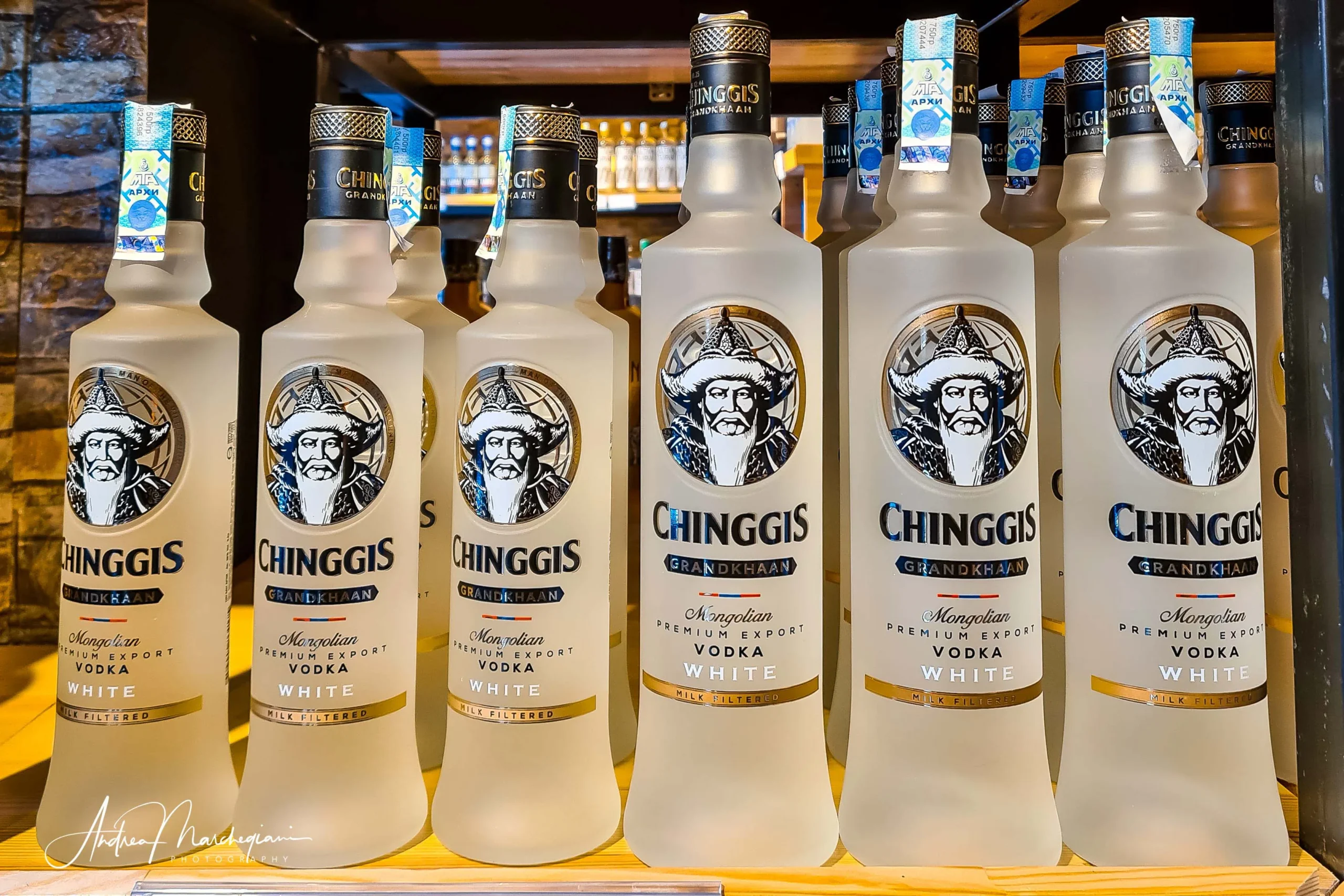
4. Vodka
Even those who do not like vodka will appreciate it in Mongolia. Nothing warms up more than a good glass of vodka on strict Mongolian nights.
The spread of vodka in Mongolia dates back to the years of Russian influence in the country, but now the habit of drinking it is rooted in the bowels of local customs.
When the Mongols open a bottle of vodka they drink at least three glasses, never one less, as a sign of good luck. If they invite you to drink, they will not accept no as an answer. Whoever refuses is mocked and made fun of!
In addition, they have a habit of never throwing out vodka, but not even to drink from a half-empty bottle. Therefore, every time they drink they open a new bottle and try to finish it in company. The rumour is widespread that evil spirits sneak into open bottles so no one wants to drink from them. Not being able to throw them away, they use them to clean the dirty windows!
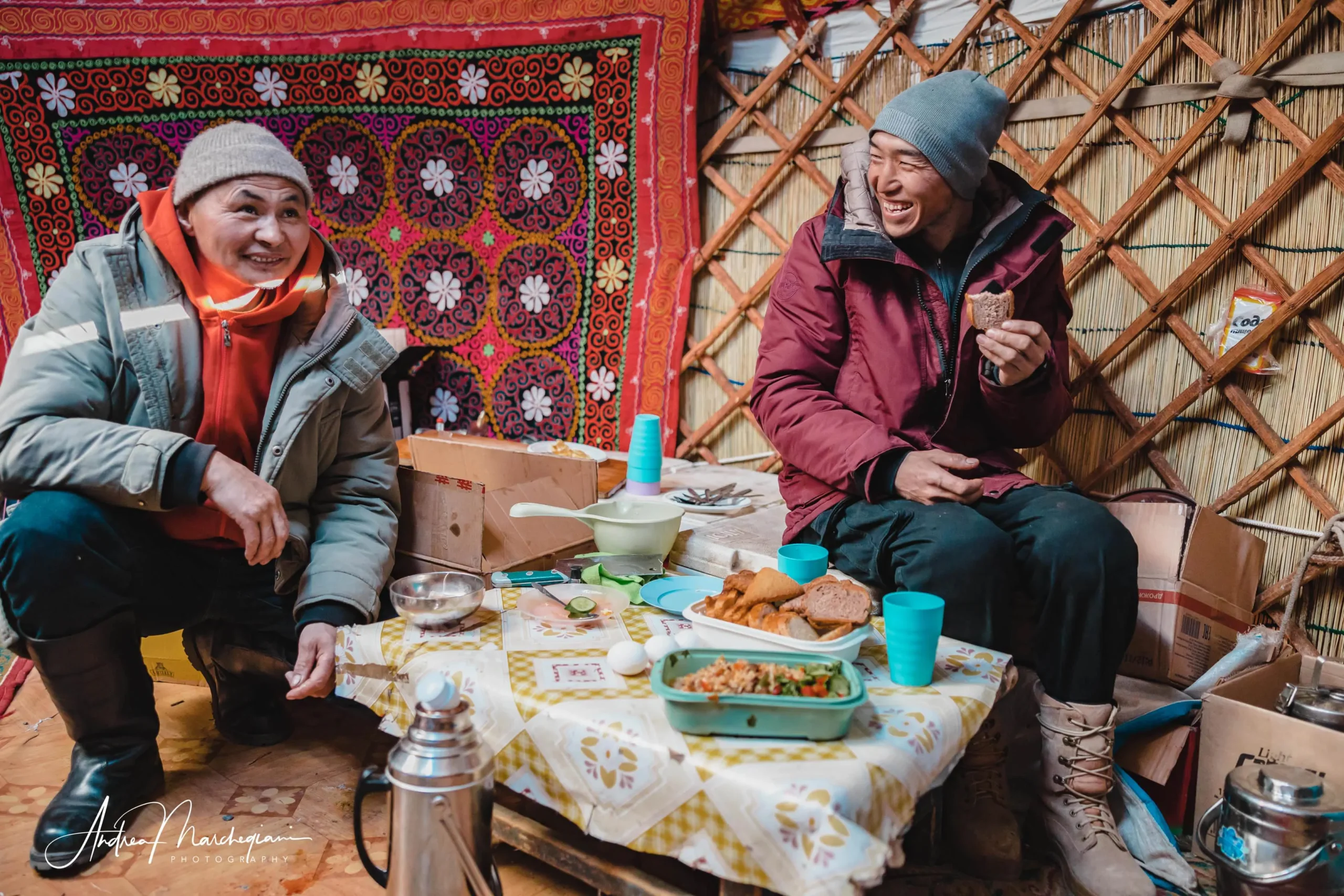
Do's and don'ts while eating
Do not take food with your left hand, but only with your right or both hands. This tradition is widespread throughout Asia and Mongolia is no exception. The left hand is considered the hand you wash with, therefore dirtier than the right. If you’re left-handed, try not to take anything with your left, not even the change at the supermarket. I personally asked how rude it is to do so, and the answer was a clear “pretty much!”
Do not point the sole of your shoes at others and do not get up from the table while others are still eating.
Above all, do not refuse the food that is offered to you and do not complain if it is not to your liking. As a rule, refusing a cup of salty tea is considered a very rude gesture. Drink at least a sip.
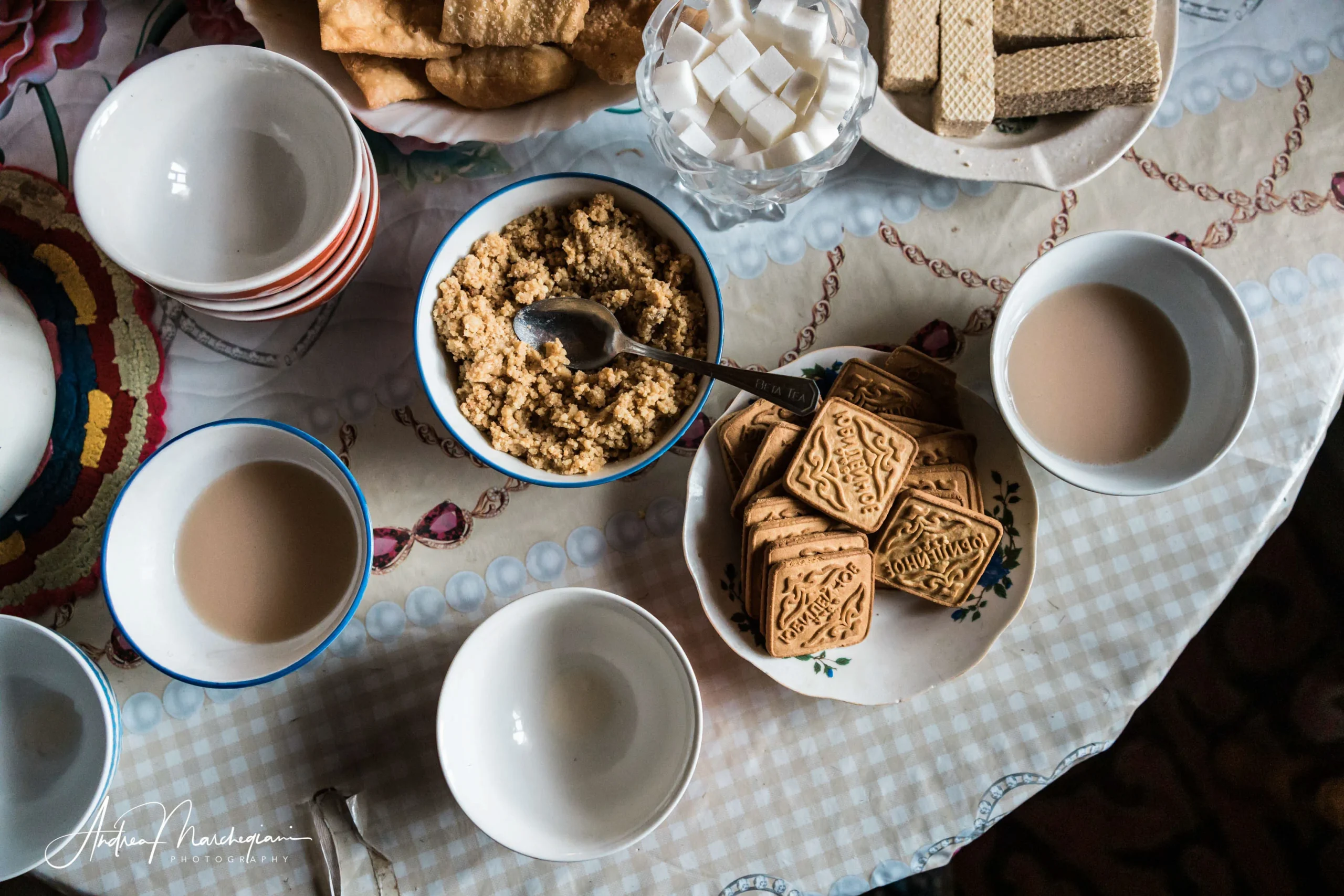
Presents to bring if you are invited to lunch by a Mongolian family
Candy! I’m not kidding. Mongolians love candy. If you are invited to lunch by a Mongolian family, don’t show up empty-handed. Go to a local supermarket and buy large packets of candy.
When I asked my guide Uugie to help me pick out a gift for a dinner I was invited to, he went safely to the candy counter and picked out a couple of candy packs for the kids, the same kind we would never have our children eat to keep them from tooth decay and uncontrolled glycemic spikes. He assured me the gift would be appreciated by the whole family. In fact, at dinner, the table was already full of sweets of all kinds, which the Mongols love to discard at the end of a meal as dessert.
Another welcome gift is undoubtedly a bottle of good vodka, especially from the brand Soyombo super premium series, which is the best brand of vodka produced in Mongolia and will make the eyes of your Mongolian friends shine. Obviously they will open it at the end of the meal to drink it in your company!
Begin your meals by saying Saikhan khool loorai, which is Bon appetit!



